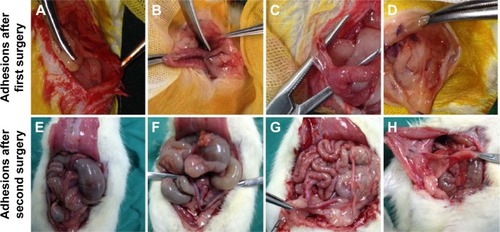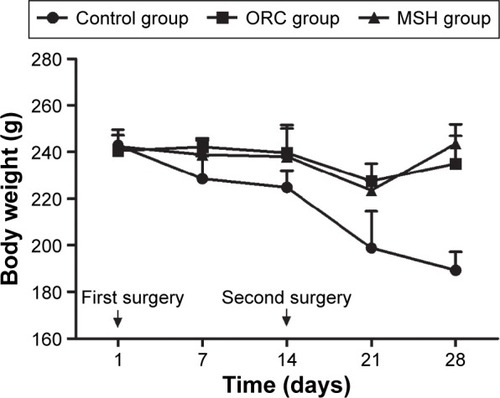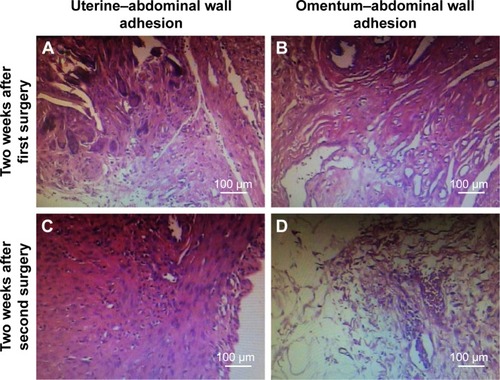Figures & data
Figure 1 The surgical technique for creating the adhesion model.

Figure 2 The representative adhesions after the first surgery (A–D) and second surgery (E–H).

Figure 3 The adhesion scores of the control, ORC, and MSH groups at 2 weeks after first or second surgery.

Figure 4 The body weights in each group are depicted.
Abbreviations: ORC, oxidized regenerated cellulose; MSH, medical sodium hyaluronate.


